“It’s nothing like it used to be,” says Wendy Gould, who has lived in Weston-super-Mare for 45 years. “What is a town centre without proper shops?”
“I can still remember when the BHS was Littlewoods – you used to be able to get everything you needed in one trip. It’s not like that any more.”
From a thriving Victorian seaside destination to a high street now dominated by drab chains, the story of Weston-super-Mare follows a trajectory that - on the surface - will feel familiar to many.
Local headlines reflect something of a fall from glory: “The shocking state of Weston-super-Mare’s high street – and what’s being done about it”, reads one headline from July; “Loss of Argos store ‘disappointing’ and more big names could leave Weston High Street” states another from October.
But is that the whole truth? In a town like Weston-super-Mare, where residents and tourists alike cling to images of bygone days, it’s easy to be lured into nostalgia.
“You speak to a lot of people of a certain age, and they seem to be fixated on this idea of the ‘good old days’ which, of course, never really existed,” local historian and councillor John Crockford-Hawley explains.
“There seems to be a belief that our high street once met absolutely all our needs, but that was never the case. It’s selective memory, more than anything.”
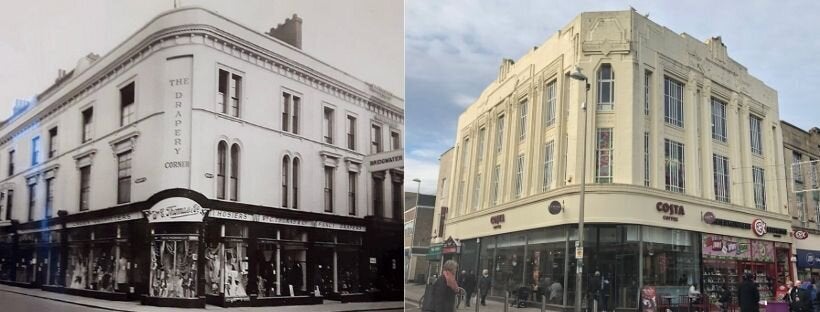
It’s no secret that Britain’s high streets are suffering. From rising business rates pushing businesses out of their premises to the lure of out-of-town centres (with their free parking), many of our town centres appear to be in crisis.
Scratch below the surface, though, and the reality is more complex – and hopeful.
We took a look at how the shops in one high street have changed, and what lies on the horizon.
100 years of one high street
Street registers from 1919 show a huge variety of shops available on Weston-super-Mare’s high street.
Among them were chemists, confectioners, trunk makers, jewellers, butchers, and even an artificial teeth makers.
But it wasn’t just shops – the high street was home to solicitors, banks, and the Assembly Rooms, where society gathered to be entertained with cards, games, and conversation.
Just as the high street as a whole has a story to tell, so do the individual buildings that make up its landscape.
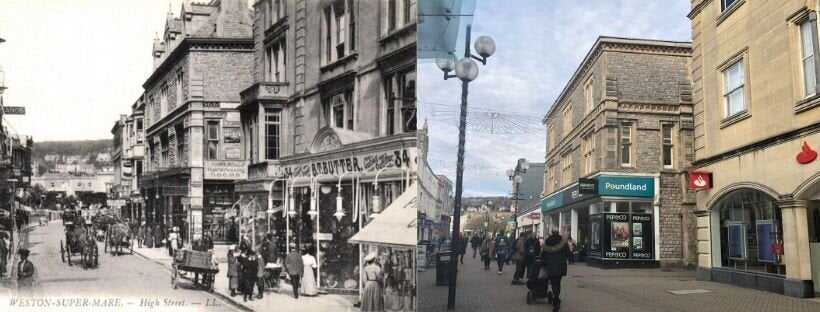
The current Poundland at 64 High Street replaced discount clothing chain Ethel Austin in 2017, which had fallen into administration years before – but to many of Weston-super-Mare’s longtime residents, the building is and somehow always will be Woolworth’s. Weston’s branch was one of the longest-lasting in the UK, opening in 1919.
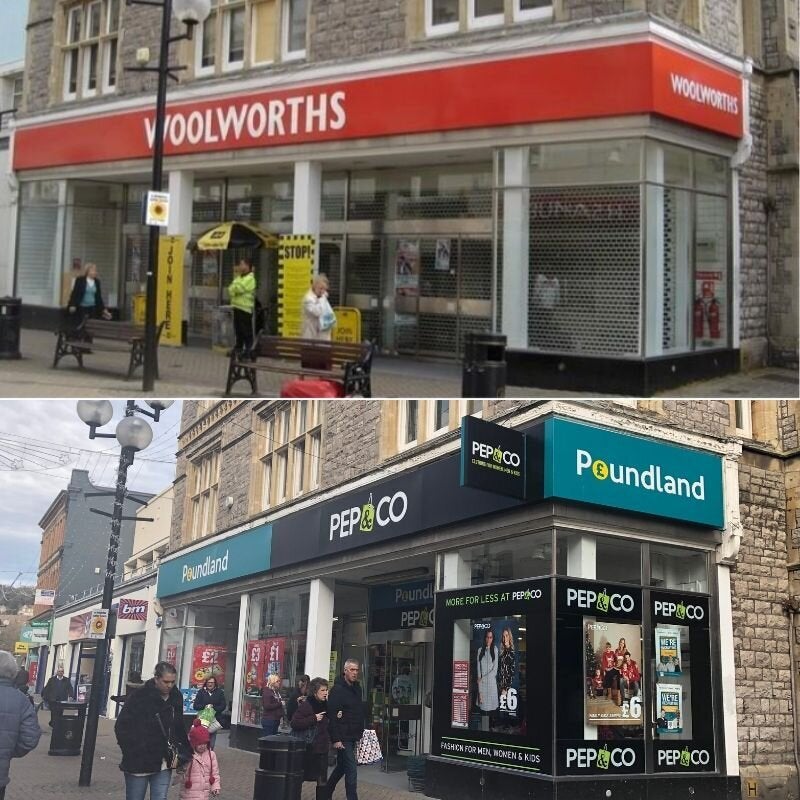
At street level, 50 High Street is almost indistinguishable from any other unit lining the town centre, but look up and it’s clear the building has seen its fair share of changes through the street’s history.
The building is now occupied by tReds – fashion and shoe shop founded in 1996 – and a branch of Fone World. One half of number 50 was formerly home to Stead and Simpson, a British shoemaker founded in Leeds in 1834 which grew to become the largest business of its kind in the world and was later bought out by discount store Shoezone in January 2008.
The other half was home to Maypole, a greengrocers – which have all been knocked out of the UK’s high streets as a result of the arrival of the supermarket. Weston-super-Mare’s first supermarket opened in the high street in the early 1970s, but as in the majority of the nation’s towns, food shops in town centres have given way to supermarkets on the outskirts.
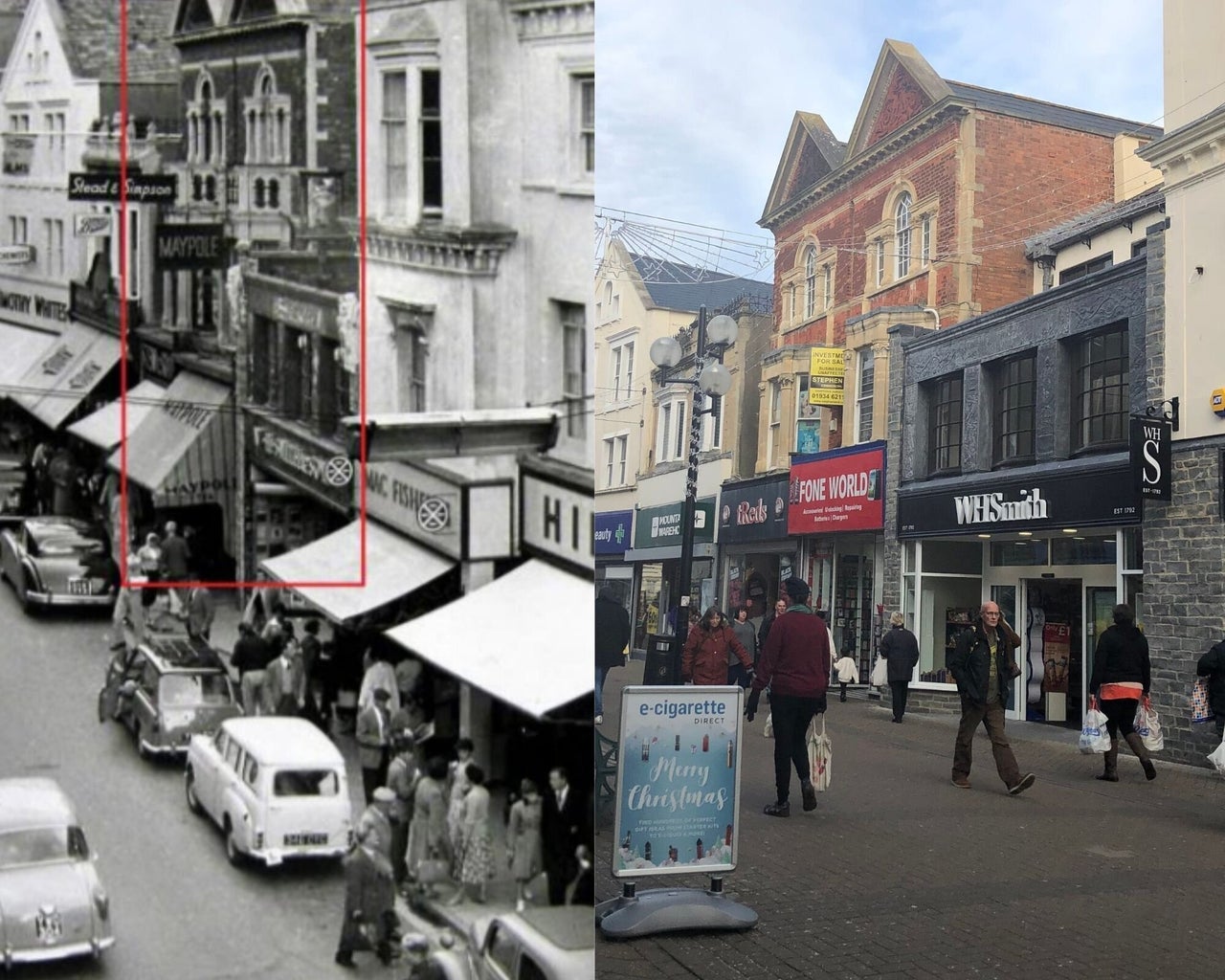
As the established, often specialist, retailers of old have closed their doors, or the big names have moved out of town centres in favour of big-city units, high streets across the UK have seen the arrival of much smaller businesses open in their wake.
Among them are the phone shops, vaping supply stores, and discount clothing shops – all of which can be found along Weston-super-Mare’s High Street.
Why are our high streets suffering?
“It’s fair to say that our high streets suffer from a bit of an image problem,” says professor Cathy Parker, co-chair of the Institute of Place Management.
A century ago our high streets were very different places – chain stores as we know them today were in their infancy and with limited travel options, most of the day-to-day necessities could be found within a few hundred metres.
Average footfall in the UK’s high streets has fallen by 20% over the last 10 years, with vacancy rates – the percentage of empty shop units – hovering at around 10%. But when it comes to working out what’s actually going wrong in our town centres, Parker explains, the picture is much more nuanced.

“There’s actually no such thing as the average high street,” she says. “You can say footfall’s gone down 20% across the UK, but in some towns it’s gone down by 40% whilst some towns have actually increased their footfall.
“While we might talk generically about high streets and town centres, you’ve got to look closely at what’s happening in your local town, in your local high street. It’s not a nationwide problem although it’s usually perceived as that.”
Cathy – alongside several other researchers – has identified the factors that impact our town centres and high streets.
The list stretches to more than 200 factors. These are the 15 most influential ones:
- Footfall (number of pedestrians in the town centre)
- Accessibility (how well connected the high street is for pedestrians/motorists/public transport
- Types of retailers in the town centre
- Construction of out-of-town shopping centres
- Convenience
- Leadership (vision and strategy for the town centre)
- Opening hours
- Shopping hours
- Place attractiveness
- Retailer offer
- Supermarket impact
- Economy
- Centre size
- Area development strategies
- Internet shopping
“Internet shopping is definitely having an impact, but it’s actually much more complementary and the introduction of services like click and collect have actually been a great boost,” Parker explained. “Meanwhile, if I decide to drive to an out-of-town mall, I can’t be anywhere else while I’m there.
It’s not just where the shops are – but when they’re open – that is increasingly impacting how we interact with our high streets.
Take a walk through Weston-super-Mare mid-morning on a weekday and the high street feels busy, but with such a high proportion of residents working nine to five it’s easy to see how the traditional high street is rendered more or less inaccessible to a sizeable proportion of the population.
Factor in that, with Bristol just minutes away by train, many residents now commute into the city for work, and there’s a whole group of people who are unable to make use of the high street (or spend any money there) for five days of the week.
Our obsession with retail is part of the problem, too. Once high streets housed people, doctor’s surgeries, small hospitals, hotels, and community centres – a whole host of other services that had nothing to do with shopping, and were open beyond trading hours.
“The shops all close at around 5pm, and because the shops are closed the cafes are closed, and nobody comes into the town centre because there’s nothing here for them. If we had people actually living in High Street, making use of that space, I think we’d see a bit more life in the town,” John Crockford-Hawley said.
“At the moment there’s nothing to do, which leaves it open to misuse, which eventually leads to people being even more put-off from the idea of coming into the town outside of shop opening hours.”
What does the future hold?
When it comes to watching Weston’s high street evolve, there are few people who are better placed to observe the changes than Sam Walker, the latest owner of department store Walker & Ling in a family line that stretches back 127 years.
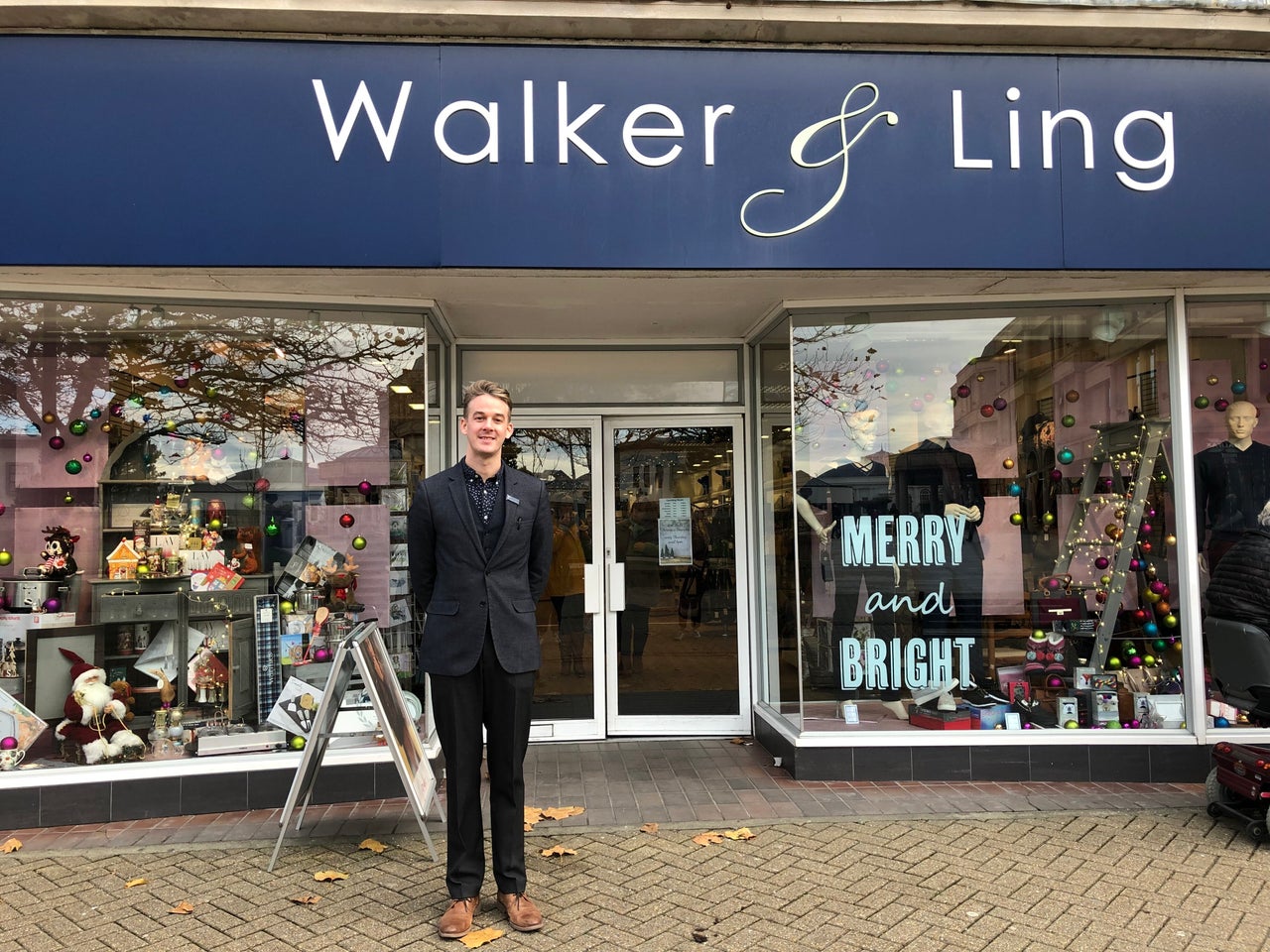
“Footfall is declining – has been declining – for many years and if we’re honest, it is plain to see that the high street of the 1990s and 2000s, soulless and predictable, duplicated all over the country, is finished,” he says.
“What people want now is a point of difference, an experience. Family-run stores like ours, that are part of the local community, are part of a singular, Weston-super-Mare experience, and you can’t get it online.”
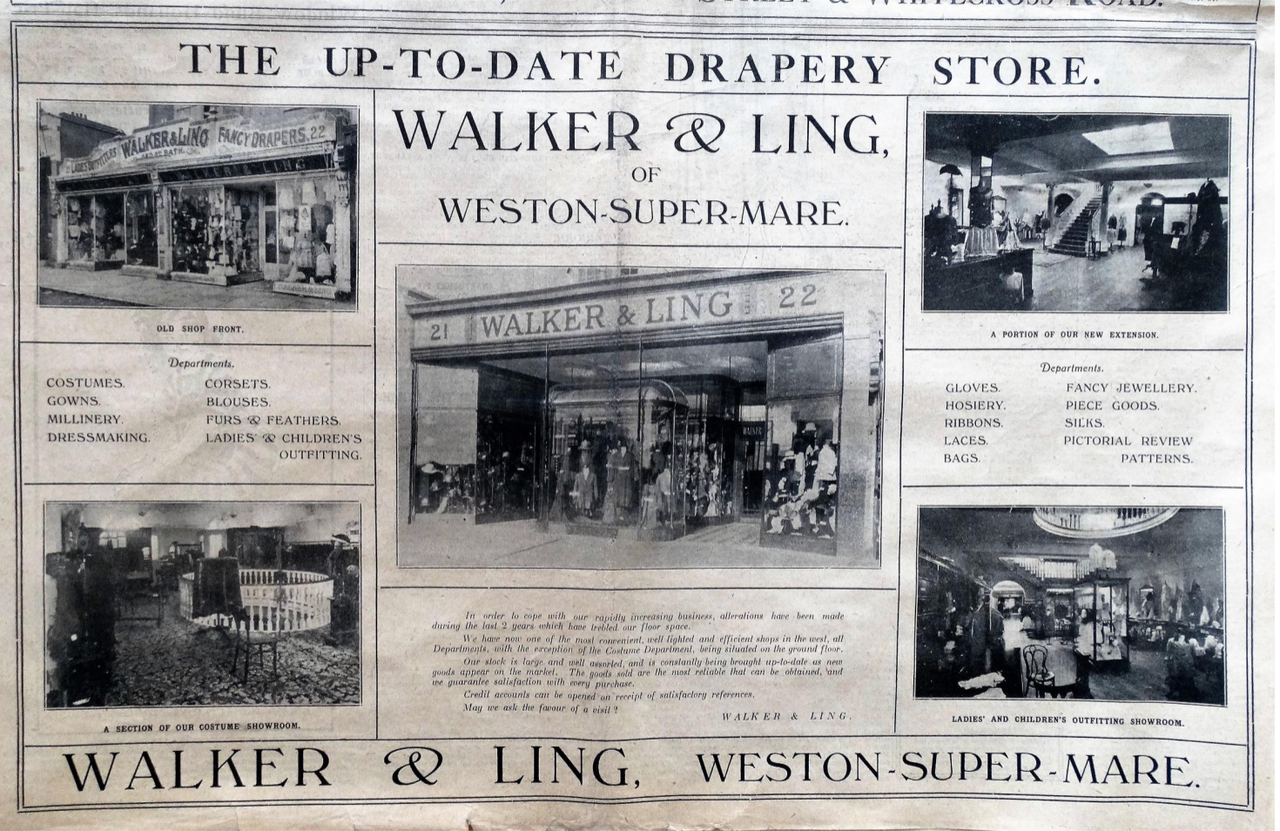
Nostalgia might be killing peoples’ perceptions of the high street, but tracing back to their heyday could hold the key to the town centre revitalisation too.
Back in the North Somerset town, the authorities are taking matters into their own hands – to try to save the high street they’re looking beyond our traditional expectations of retail.
It wasn’t without controversy, but in summer 2018 the council intervened directly in the fate of the area, announcing it had partnered with investors Legal and General to purchase the sprawling Sovereign Shopping Centre – a deal worth £21m.
The centre is still home to a collection of high street names, but under the supervision of the authority also houses independent shops and community projects, including yoga, a citizens advice bureau, and pop-up restaurants.
“People expect town centres to magically deliver what everyone wants, but there’s not much of a sense of ownership,” Cathy says.
“That’s one big difference we’ve seen over the last 10 years – now people realise that you can’t just leave it all to the free market. There has to be some management and intervention.”
That’s something the council are also on their way to addressing, recently commissioning London-based architects Turner Works to engage the community and come up with “a new set of priorities and projects” for the council to work towards. A spokesperson for the council explained that the vision for Weston-super-Mare’s future didn’t just include retail space – but “somewhere to work, to live, to visit, and to socialise.”
For some, the arrival of Banksy’s Dismaland marked a change of course in Weston-super-Mare’s fortune. For years, the town had been regarded as ‘Bristol-by-the-Sea’, with the region’s cultural epicentre 20 miles away in the city – but now people were travelling to North Somerset from all over the country.

The exhibition was packed up in 2015, but something in the sense of identity it brought to the town in the 36 days it was open to the public lingers on.
With a thriving college in the town and the opening of an arts space in the high street, and independent spirit is making a comeback – a return that is also apparent in the fortunes of small businesses.
“What people want now is a point of difference, an experience ... I think we all want the high street to thrive, and I speak to a lot of customers who love our store, so there is hope,” Sam said. “I have the same, very positive, conversation every single day –‘if we don’t use you we’ll lose you.’”